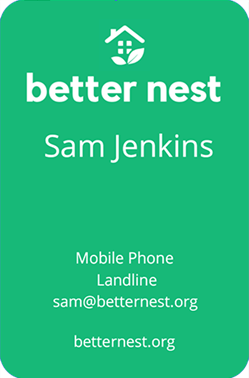You might wonder if business cards are relevant in today’s digital age. Surprisingly, they are. They remain a powerful tool for networking and making a memorable first impression. A physical card is tangible and leaves a lasting mark, especially when it stands out. While I’m no networking guru, I’ve picked up a few useful tips along the way that might help you make the most out of your business cards.
Include Your Photo
During a networking event, you’re likely to speak to many people; however, remembering who those people were and which business card relates to whom can be challenging.
Adding a picture of yourself to your business card can help improve the chances that the person you were talking to can remember that you were the person they wanted to speak to about their next JV or connect you to someone useful.
Choose a professional, friendly photo that aligns with your brand image to leave a lasting impression.
Link to Linktr.ee
Incorporate a link to your Linktr.ee profile. Linktr.ee is a convenient tool that allows you to compile various links into a single, easily accessible page. This way, you can direct people to your social media profiles, website, or portfolio, providing them with a comprehensive view of your online presence.
This is an excellent way of giving them access to various resources about you without using up all the space on your business card. “Want to book a meeting with me? There’s a link for that on my linktr.ee”
Linktr.ee isn’t the only available option. However, it seems to be the most popular.
QR Code for vCard
Including a QR Code that leads to your vCard (electronic business card) is a modern and efficient touch. It simplifies the process for others to save your contact information directly to their smartphones, making it more likely for them to contact you later.
When I give someone a business card, I’m not just looking for them to have my business card; I want to be on their contacts list. I want it to be easy for them to call/message me when they think of me.
Remember that a vCard QR Code will be far more detailed than the QR Code for a link. While it might be helpful to get onto your business card if you don’t have the QR Code large enough on your card, it won’t be possible for people to scan the code, so make it as big as you can reasonably get away with.
Use Both Sides
If all of that sounds like a lot of information to fit into a single side of a business card, then you’re right; it is. However, so many people seem to forget that there are two sides to every business card. Using the back of your business card to provide more information can be a great way to include everything you want without the business card getting too cluttered.
Personally, I have my photo and QR code on the back of my business card, leaving the front free for the more usual details.
| Front of card | Back of card |
|---|---|
 |
 |
Have a Trades Card
Consider creating a separate business card specifically for trades. This card can offer incentives, such as a finder’s fee, encouraging tradespeople to refer potential vendors to you. By establishing this sort of partnership, you open up a direct avenue to potential leads, particularly those interested in selling property.
| Trade card |
|---|
 |
Final Thoughts
Let me know if these tips pique your interest and if you’d like to learn how to implement them effectively! I’d be happy to create a guide to help you make the most out of your business cards in this digital age. Networking is about making meaningful connections, and a well-designed business card can pave the way.